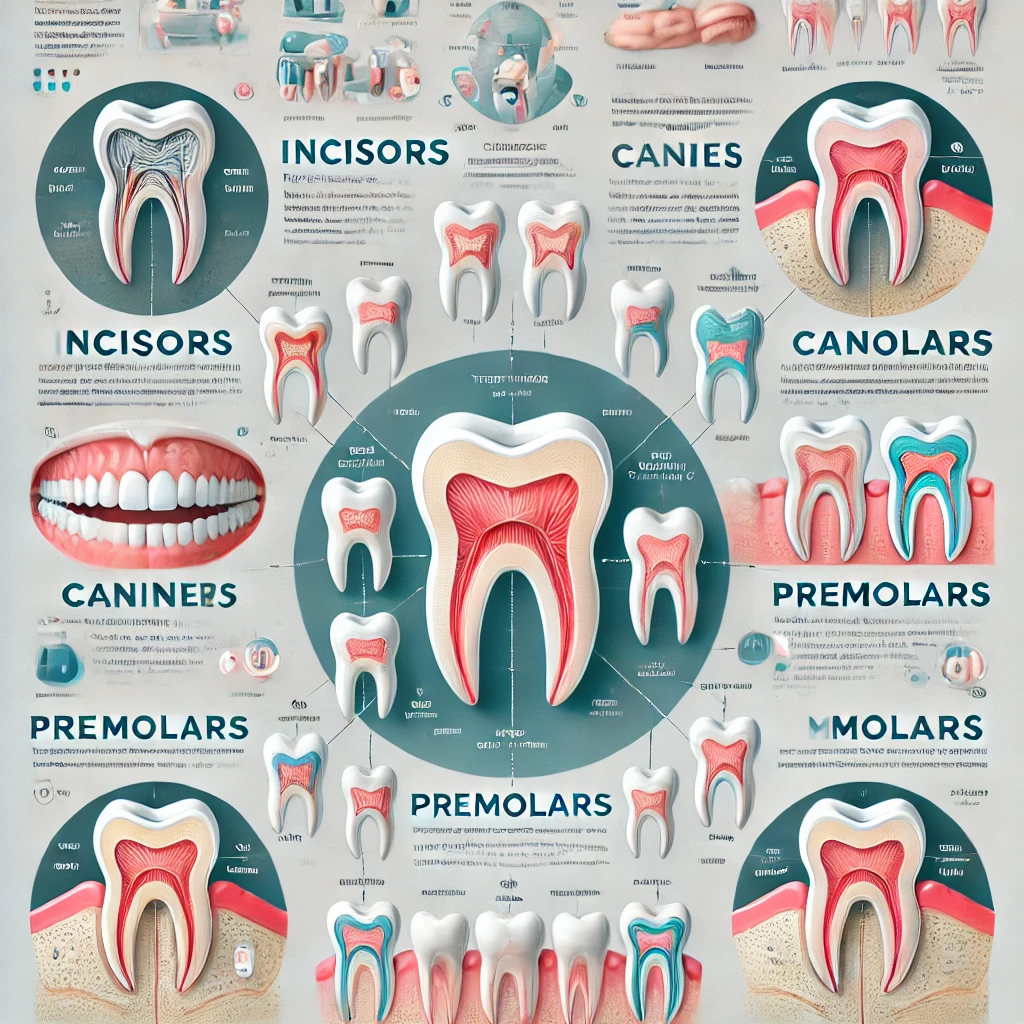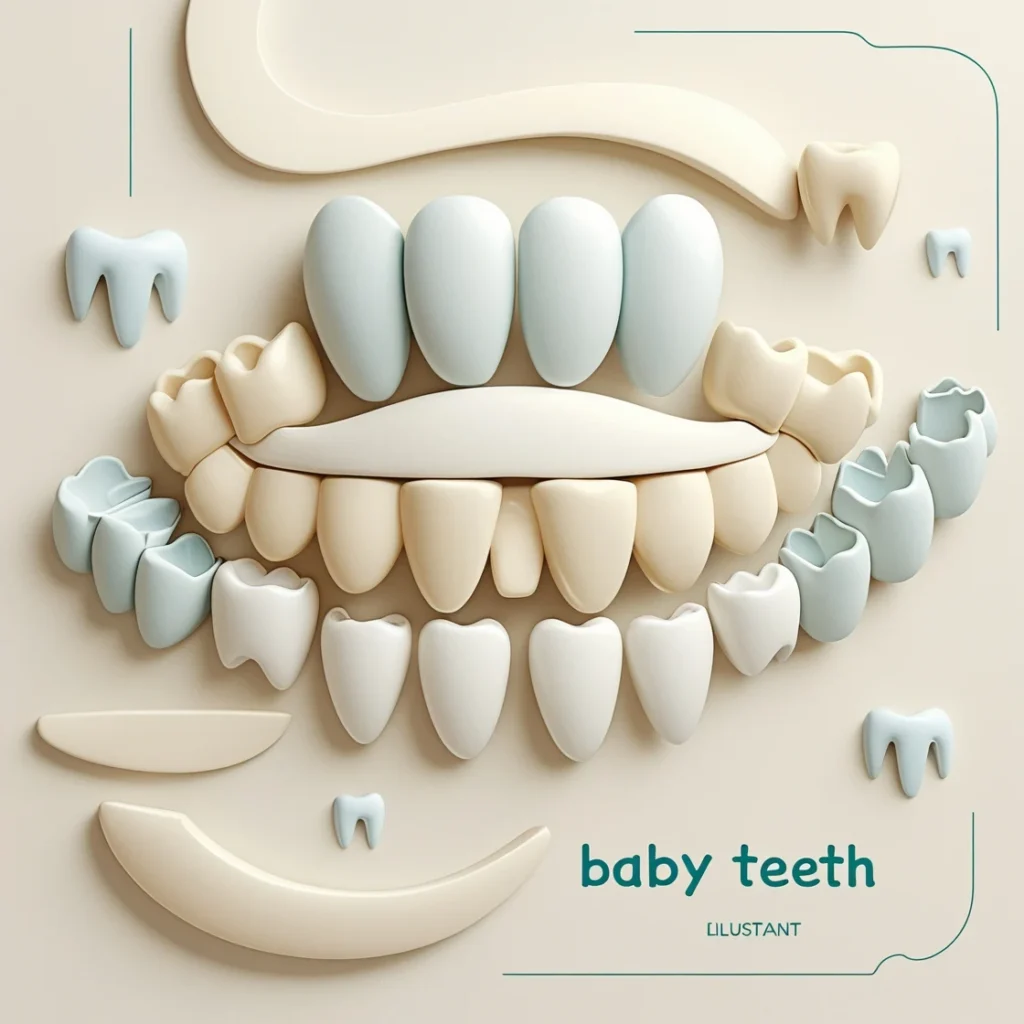How many teeth do humans have
Your teeth are part of your digestive system. They break down foods by crushing or cutting them before you swallow. Most humans have 32 teeth, although some have more and some have fewer. Enamel (the protective outer layer of your teeth) is the hardest substance in the human body.

What are teeth?
Your teeth play a big role in digestion. They cut and crush foods, making them easier to swallow.
Though they look more like bones, teeth are actually ectodermal organs. Other ectodermal organs include your hair, skin and sweat glands.
How many teeth do humans have?
Most adults have 32 permanent teeth. But some people are born with missing teeth (hypodontia), and some people have extra teeth (hyperdontia).
Most children have 20 primary teeth that grow in (erupt) between the ages of 4 months old and 6 years old. These are baby teeth that’ll eventually fall out and make room for permanent adult teeth.
What are the four types of teeth?
We have different types of teeth, and each type serves an important purpose. There are four types of permanent teeth in humans:
- Incisors.
- Canines.
- Premolars.
- Molars.

Incisors
Your incisors are the most visible teeth in your mouth. Most people have four incisors on the upper jaw and four on the lower. These include your front two teeth and the teeth on either side of them.
Each incisor has a single narrow edge, which helps cut into food when you bite.
Canines
Canine teeth get their name because they resemble a dog’s fangs. They’re pointier than other types of teeth. Most people have four canine teeth — one in each quadrant (upper right, upper left, lower right, lower left).
Canine teeth help you tear into foods like meat and crunchy vegetables. Sometimes, people call canines “eye teeth” because of their position directly under your eyes.
Premolars
Also called bicuspids, premolars sit between your canines and your molars (the teeth in the back of your mouth).
Premolar teeth have features of both canines and molars. They help you tear, crush and grind food into smaller pieces.
How Many Teeth Should I Have?
Depending on if all of your adult teeth came in, or if you’ve ever had teeth removed or damaged, adults typically have 32 teeth. Babies and children have fewer teeth.
Do you know how many teeth you have? Depending on if all of your adult teeth came in, or if you’ve ever had teeth removed or damaged, all adults have roughly the same number of teeth. Teeth are an important part of both your bone structure and your digestion.
Every tooth has three layers: the enamel, dentin, and pulp.
- Enamel.
Enamel is the visible, white, outer layer. This hard surface protects the inner
layers of each tooth from the damage of decay or injury. Enamel is the hardest
tissue in the whole body. - Dentin.
This is the middle layer of the tooth, which is the most similar to bone
tissue. Dentin makes up the majority of the tooth structure. It has millions of
tiny tubes connecting it to the life-source of the tooth: pulp. - Pulp.
The pulp is the living core of each tooth, and the innermost layer. The pulp is
made up of blood and nerves.
The part of the tooth above the gumline is called the crown. And the part of the tooth below the gumline is called the root, which attaches the tooth to your jawbone.
How many teeth do babies have?
On average, babies first start getting new teeth around 6 months. But it’s not unheard of to see a 3 month old with a tooth, or a 1 year old with just one tooth still. All a child’s “baby teeth” should be in between 2-3 years old.
Baby teeth are also called primary, or deciduous teeth, because they’re temporary and they fall out. A full set of baby teeth is 20 teeth: 10 on top and 10 on bottom.
We get baby teeth because as a child, our mouths aren’t big enough for a full set of adult teeth, but kids still need teeth to chew. So all people are born with both full sets of teeth in their jaw. First come the baby teeth and later, as kids grow older, they lose them and gain their larger, adult teeth one by one.

Even though baby teeth are “temporary,” it’s important that they’re kept clean so that they’re healthy, to maintain lifelong oral health. Tooth decay in childhood can adversely affect adult teeth.
Brush your child’s baby teeth for 2 whole minutes, just as you do your own.
How many teeth do adults have?
People start losing their baby teeth and getting their adult set as early as 5 years old. Adults have 32 teeth. You should have this full set of adult teeth by your late teens.
Adult teeth include incisors, canines, premolars, and molars:
- 8 incisors. Your four front teeth on the top and bottom are sharp for holding
and cutting food. Incisors
also help you sense the texture and kind of food you eat. - 4 canines or cuspids. The pointed teeth on the top and bottom are called canine teeth, or
cuspids. They have cusps for grabbing and tearing food. - 8 premolars. These teeth are between the cuspids and molars both physically
and in form. Premolars
look like molars but they have two cusps and are sometimes called bicuspids.
Premolars cut and tear food. - 12 molars. You have eight molars on top and bottom. They have broad chewing surfaces to
grind down food before it’s finally swallowed. This includes wisdom
teeth, your third set of molars, which can show up as late as your early
20s and are often removed.
Not everyone can comfortably fit all 32 adult teeth in their mouth. Science shows that human jaws began shrinking around the time humans transitioned from hunter-gather societies to sedentary farmers. This could be because the new foods that humans could eat were cooked softer and easier to chew, and thus eating to survive didn’t require a big strong jaw.
Having too many teeth, or overcrowding, can cause:
- misaligned teeth
- increased decay
- impacted wisdom
teeth - risk for periodontal disease
This is why many people have their wisdom teeth removed.
How many teeth do we have?
Humans are born with toothless gums. The first set of teeth to erupt is the deciduous teeth, also known as baby teeth, which begin to appear around six months of age. The second set of teeth, the permanent teeth, starts replacing the baby teeth beginning at age 6. These remarkable structures play a vital role in digestion, speech development, and facial aesthetics. Despite similar hardness characteristics, teeth are distinct from bones.
The types, numbers, and distribution of both sets of human teeth are symmetrical between the right and left sides of the upper and lower teeth, forming mirror images of each other.
Baby teeth (Deciduous teeth)
While teething can begin as early as three months, it typically starts between 4 and 7 months. Babies usually get new deciduous teeth every six months. It takes a few years for all baby teeth to erupt. A complete set of baby teeth comprises 20 teeth: 10 upper and 10 lower.
The types, number, and distribution of baby teeth are:
- Incisors (8 total): The four front teeth in each jaw are essential for biting and cutting food.
- Canines (4 total): Pointed teeth next to the incisors, aiding in the tearing and ripping of food.
- Molars (8 total): Located at the back of the mouth, these have a broad, flat surface for grinding food.
Deciduous teeth serve as a crucial foundation for jawbone and facial structural development. They also play a role in chewing and speech. However, these temporary teeth are gradually replaced by a more robust set of permanent teeth as the child grows.
Tooth decay in baby teeth can harm permanent teeth. Therefore, it is crucial to brush them regularly to keep them clean and healthy.
Adult teeth are of 4 types
- Incisors (8 total): These are the four central upper and lower front teeth. They help cut food while biting and help you sense the texture and kind of food you consume.
- Canines (4 total): Canines are pointier than other types of teeth. Their locations are adjacent to the upper and lower incisors, one on the left and one on the right, aiding in tearing and ripping tough food, such as meat.
- Premolars (8 total): Their locations are between the canines and molars, 2 in each quadrant, with a similar appearance to molars. However, they have only two cusps instead of four or five cusps of the molar teeth. Premolars help tear and cut food.
- Molars (12 total): Molars at the back handle the final grinding to facilitate digestion. Most adults have three molars in each quadrant, including the third molar or wisdom tooth, which erupts last, one in each quadrant.
Proper alignment of the whole set of all 32 adult teeth is uncommon. Overcrowding, where there is not enough room to fit in all teeth, can lead to the following conditions:
- Misaligned teeth
- Increased risk of tooth decay
- Impacted wisdom teeth.
- The risk for periodontal disease (Gum disease)
To avoid overcrowding, some people decide to have their wisdom teeth extracted to forestall overcrowding risk.
Structural components of a tooth
Although teeth resemble bones, they are dissimilar. Unlike bones, fractured teeth cannot heal by forming a callus. Another difference is teeth do not have a marrow but contain dental pulp.
Tooth components include:
- Enamel: Enamel is the strongest and toughest tissue of the human body. It forms the outermost tooth surface, protecting it from daily wear and tear and bacteria-causing cavities.
- Dentin: Dentin is the layer under the enamel. It is not as strong as enamel. Exposed dentin increases the risk of cavities.
- Cementum: Cementum is a connective tissue covering the root of a tooth, anchoring it firmly in the jawbone.
- Pulp: Occupying the innermost part of the tooth, the pulp contains blood vessels, nerves, and tissues.
Common teeth problems
Common teeth problems include:
- Bruxism: This excessive grinding can erode the enamel, with increased susceptibility to damage.
- Dental caries: These happen when bacteria damage the protective enamel layer.
- Impacted teeth: Teeth impaction is when teeth do not emerge properly and arrest the jawbone below the gum line.
- Teeth sensitivity: This problem is typically due to worn enamel or exposed tooth roots.
- Dental injuries: Typically, due to sport-related injuries, they can lead to chipped or cracked teeth.
- Tooth discoloration: Food, drinks, medications, and others can stain the enamel coating, causing discoloration.
- Misalignment: Teeth misalignment encompasses several problems, including crooked, rotated, gapped, and crowded teeth. Misalignment can affect your oral health negatively.
- Tooth abscess: Tooth abscess can happen when bacteria infect the tooth pulp.
- Gum disease: Gum disease is due to infection affecting and damaging the gum and surrounding soft tissues. Although gum disease starts in the gum, it can affect teeth, leading to tooth loss.
Types of Teeth
Table of Conte
- Human Teeth
- Types
- Incisors
- canines
- Premolars
- Molars
Human Teeth
Unlike pythons and pelicans, humans cannot swallow food in one big gulp. Food must be broken down into smaller pieces before it can be swallowed. This function is performed by hard, calcified structures called teeth.
Humans have different types of teeth that perform various functions such as cutting, tearing, shearing, grinding and crushing. The teeth are powered by the jaw muscles and lubrication is done with the help of saliva, which is produced in the salivary glands.
Vertebrates possess teeth that vary in structure and numbers. These arrangements of teeth are expressed through a special formula called the dental formula, which is expressed in the form of fractions.
Human Teeth Diagram
Types of Teeth in Humans
Teeth have different shapes as each tooth has a particular role to perform during mastication (chewing) and eventually digestion. They are also positioned differently, so as to better serve their purpose.
There are four different types of teeth in humans. Listed below are the form and functions of types of human teeth:
Incisors
Incisors are present at the front of the mouth. These teeth have sharp edges and are adapted for cutting food into small, chewable pieces. Humans have eight incisors, four incisors in the upper jaw and four in the lower jaw.
Canines
Canines are also called cuspids. They are situated at the ‘corners’ of the dental arches. They are characteristically sharp, elongated and pointy surface. Their primary function is to grip and tear food (tough food such as meat). Humans have four canines, two in the upper jaw and two in the lower jaw.
Premolars
Premolars are also called bicuspids and are located behind the canines. These teeth have a flat surface with ridges, which is adapted for crushing and grinding food into smaller portions. Humans have eight premolars, two on each side of the jaws.
Molars
Molars are the largest and strongest teeth. It has a large and flat biting surface, which is well-adapted for grinding food. Humans have 12 molars, six in each jaw. Four of those are wisdom teeth, which is also called the third molar, which come in between the ages of 17 to 25.
Wisdom Teeth
When it comes to how many teeth do humans have, wisdom teeth are the final pieces of the puzzle. These teeth, also known as third molars, are the last to emerge in the human mouth. Typically, humans have 4 wisdom teeth—two in the upper jaw and two in the lower jaw. They usually erupt between the ages of 17 and 25, though some people may have fewer or none at all.
Our ancestors relied on wisdom teeth to grind down coarse, raw foods. However, as human diets and jaws have evolved, many people no longer have enough space to accommodate these extra molars. When wisdom teeth try to emerge in an already crowded mouth, they often cause issues like misalignment, impaction, and pain. As a result, dentists frequently remove them.
Common Dental Issues Related to Teeth
Understanding how many teeth do humans have can help in recognizing the various dental issues that commonly arise over a lifetime. With 32 teeth in adulthood (including wisdom teeth), maintaining proper dental health is crucial to avoid problems that can affect the function and appearance of your teeth. Some of the most common dental issues people face are related to the number and alignment of their teeth, as well as the general care they receive.
Tooth Decay
One of the most prevalent dental problems is tooth decay, which occurs when bacteria in the mouth produce acids that erode the enamel, the protective outer layer of the teeth. With 32 teeth, humans are susceptible to decay in any of them, especially in hard-to-reach areas like the molars. Poor oral hygiene, sugary diets, and infrequent dental check-ups can increase the risk of cavities, which, if left untreated, can lead to pain, infection, and even tooth loss.
Crowding and Misalignment
Overcrowding is a common issue, particularly related to how many teeth do humans have. In some cases, the mouth may not have enough room to accommodate all 32 teeth, especially when wisdom teeth begin to emerge. This can cause teeth to shift, become crooked, or overlap. Crowding and misalignment not only affect the appearance of your smile but also make it harder to clean between teeth, increasing the risk of decay and gum disease.
Wisdom Teeth Complications
Wisdom teeth, the last set of molars, often cause issues when they don’t have enough space to fully emerge. They can become impacted, leading to pain, swelling, infection, and damage to neighboring teeth. To prevent these complications, dentists commonly remove wisdom teeth. Although they are part of the 32 adult teeth, many people end up with fewer teeth after wisdom teeth removal.
Tooth Wear and Grinding (Bruxism)
With 32 teeth working daily to chew, bite, and grind food, wear and tear over time is inevitable. Some individuals also suffer from bruxism, a condition where they unconsciously grind or clench their teeth, usually during sleep. This can lead to the wearing down of tooth surfaces, fractures, or even damage to the jaw. Proper dental care and treatments like night guards can help mitigate these effects.
Understanding how many teeth do humans have and recognizing the common issues associated with them is essential for maintaining good oral health. Regular dental check-ups, good hygiene practices, and early intervention can help prevent these problems and ensure your teeth remain healthy and functional throughout your life.




